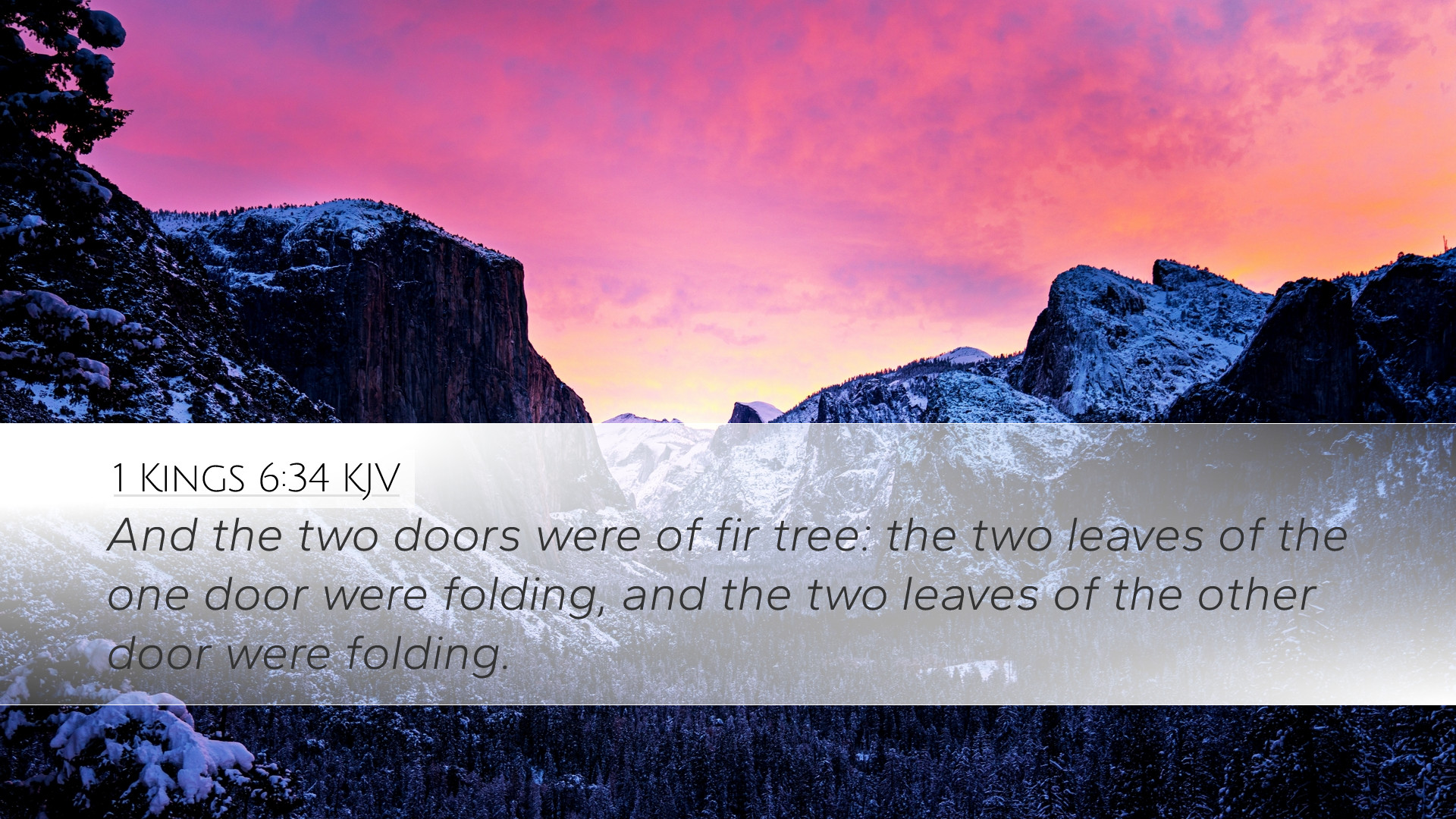Commentary on 1 Kings 6:34
Verse Context: 1 Kings 6:34 states, "And the two doors were of olive tree; and he carved upon them carvings of cherubims and palm trees and open flowers, and overlaid them with gold, and spread gold upon the cherubims, and upon the palm trees." This verse is part of the grand description of Solomon's Temple, a significant structure in biblical history, symbolizing God's presence among His people.
Exegesis and Theological Insights
The detailed account of the construction of the temple, especially concerning the doors, provides profound insights into the nature of worship and the symbolism inherent in the design. The materials used, such as olive wood, reflect not only durability but also a cultural connection to peace and prosperity, as the olive tree is often seen as a symbol of these attributes.
Material Significance
Olive Tree: The choice of olive wood is significant as it represents both beauty and strength. Matthew Henry notes that olive trees were associated with richness in the land of Israel. This highlights the idea that God's dwelling place should reflect the highest quality materials, showing His glory.
Symbolism of the Carvings
- Cherubim: These heavenly beings represent God's throne room and divine presence. Albert Barnes emphasizes that their presence signifies the sacredness of the space and the protection surrounding it. The cherubim are a constant reminder of God's holiness.
- Palm Trees: The depiction of palm trees can symbolize victory, peace, and eternal life. Adam Clarke notes that palms were often associated with the celebration of triumph and joy, further emphasizing the temple as a place of worship and celebration of God's provision.
- Open Flowers: The open flowers symbolize beauty and life. The flourishing nature of flowers suggests the abundance of God's blessings. The inclusion of floral designs among these significant symbols conveys the joy and vitality found in God's presence.
Gold Overlay
The overlaid gold accentuates the splendor of the structure. Gold has always been associated with divinity and excellence. Henry comments on the importance of this embellishment, underlining that the temple was not merely a building but a sanctuary reflecting the glory of the Lord. The use of gold signifies purity and divine presence, making the space worthy of worship.
Architectural Significance
This verse details not just an architectural description but presents a blueprint of worship and reverence. The doors, being the entrance to the most sacred space, signify the beginning of a journey into communion with God. The artistry involved—the carvings—demonstrate an intricate connection between God and His people through creativity and worship.
Application for Modern Believers
For pastors and theologians, this passage invites reflection on the importance of how worship spaces are designed and maintained. Modern worship may differ greatly from ancient practices, but the underlying principle remains: the physical space must be a reflection of spiritual truths. The beauty, order, and sanctity of worship venues can inspire congregants and elevate their engagement with God.
Conclusion
In 1 Kings 6:34, the rich imagery and careful construction of the temple doors embody the relationship between God and His people. The elements described—a blend of the earthly beauty of olive wood, intricate carvings of cherubim, palm trees, and flowers, all adorned in gold—create a powerful representation of divine interaction. The passage not only serves as a historical account but also calls believers in every generation to consider how we honor and worship the Lord in spaces dedicated to Him.


